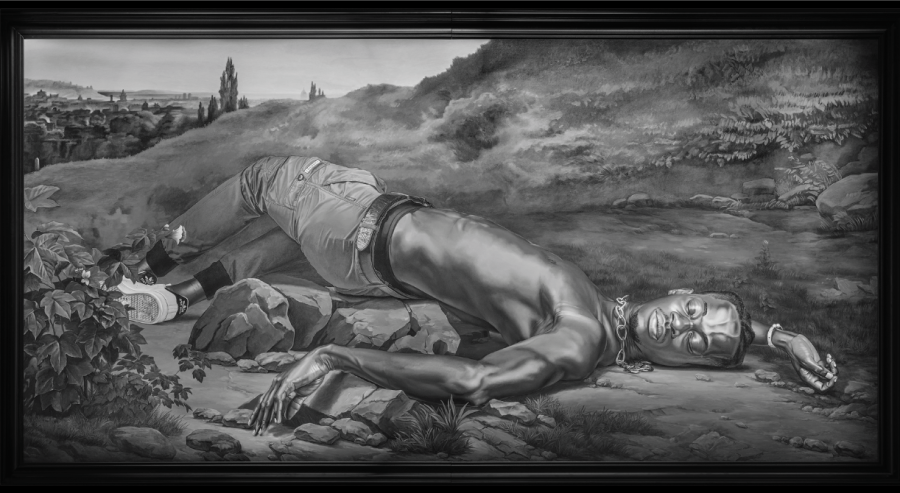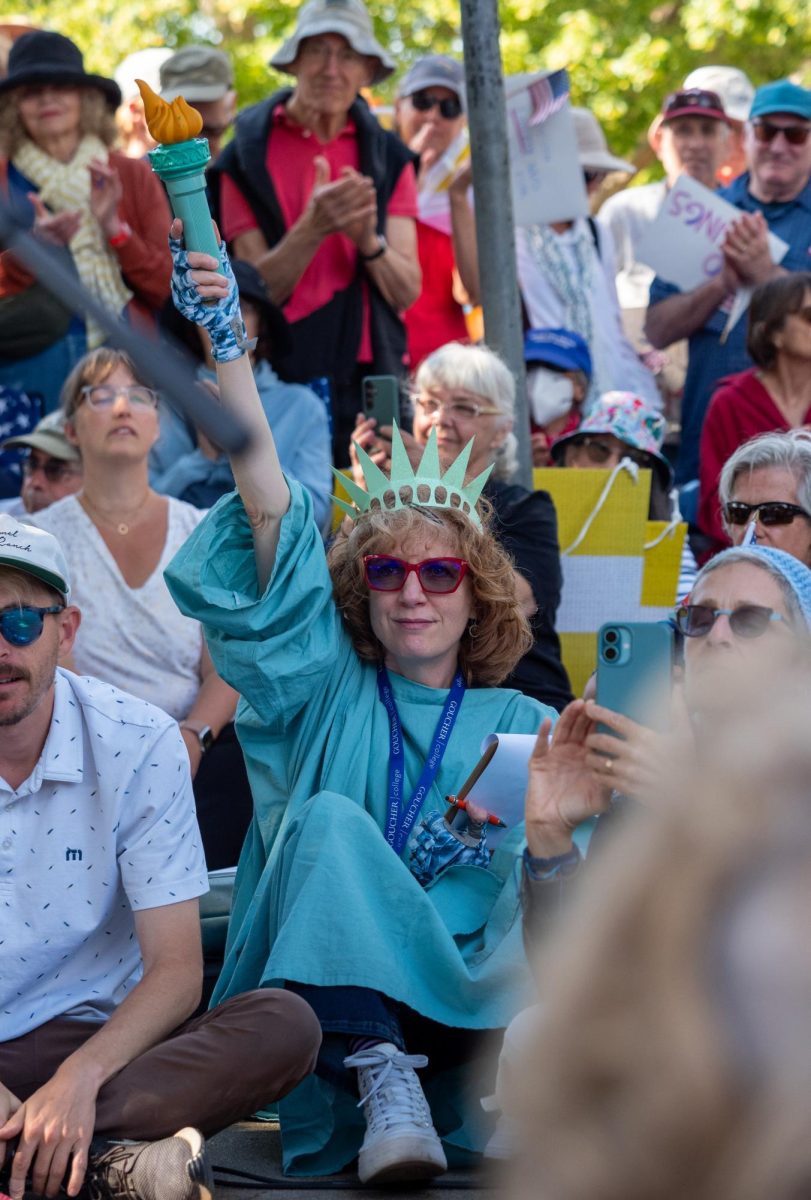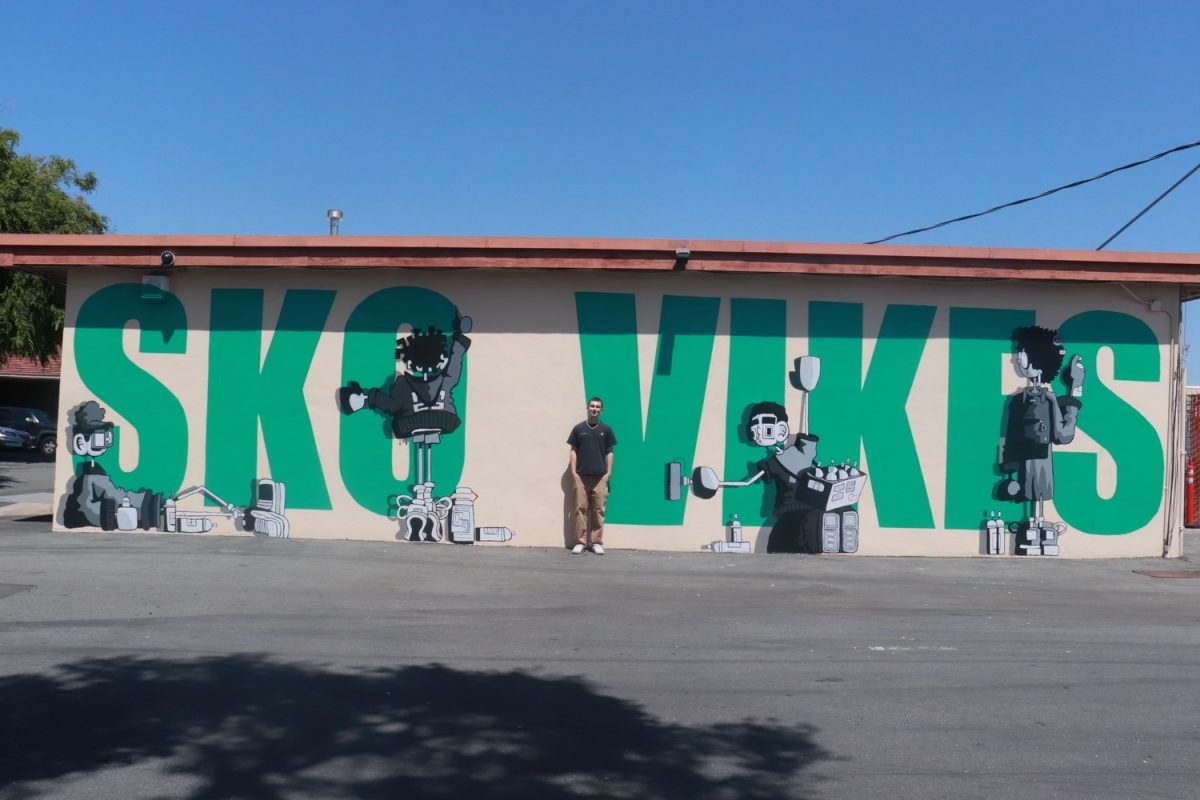Kehinde Wiley exhibit debuts in San Francisco, speaks out against systemic racism
©️ 2022 Kehinde Wiley. Courtesy of the artist and Galerie Templon. Photo: Ugo Carmeni, used with permission.
May 1, 2023
In San Francisco’s De Young Museum, wide, floor-to-ceiling paintings of vibrant colors and floral patterns with vines strewn across the bodies of young Black men and women hang in dimly lit rooms. These paintings by Kehinde Wiley are part of a new exhibition called “An Archaeology of Silence.”
Wiley is known for his naturalistic paintings of Black people and vibrant floral backgrounds, as well as his work on the presidential portrait of Barack Obama.
“An Archaeology of Silence,” which debuted in early March, is Wiley’s newest collection of paintings. According to the “Fine Arts Museum of San Francisco,” Wiley’s art “confronts the silence surrounding systemic violence against Black people through the visual language of the fallen figure.”
The art references famous paintings and poses of European martyrs, as well as mythical and religious figures struck down.
Wiley’s purpose is to transform these historical paintings into colorful, modern-day paintings of young Black men and women with the intention of calling out systemic racism and the senseless deaths of young people of color.
Art Spectrum teacher Sue La Fetra said she highlights Wiley’s work as a part of her class curriculum because of how impactful his art is.
“What a great moment in history to be able to express his frustration,” La Fetra said. “His artwork really gets the word out about the (Black Lives Matter) movement.”
Fellow Art Spectrum teacher Tracy Atkinson agrees and said the impact of Wiley’s art is powerful and beautiful.
“His new show is fabulous because I have been waiting to see if he was going to address what is going on with police brutality,” Atkinson said. “I’m glad that his new exhibition is doing that, and I think that’s a big step.”
According to La Fetra, what makes Wiley a powerful artist is his celebratory yet serious portrayal of Black individuals.
“I’ve never seen an artist portray dark skin as absolutely the most beautiful thing,” La Fetra said. “Traditional African art has a tradition of oiling the surface of wooden sculptures, and it’s about the admiration of the Black skin. Wiley’s portraits remind me of that; it’s just a celebration of how beautiful (dark) skin is.”
Keely Washington, president of the Black Student Union, said she respects how Wiley’s artwork accomplishes multiple purposes and is excited about the new exhibit.
“It is an amazing platform and opportunity to spread awareness about an important topic like systemic racism and violence while showing breathtaking art,” Washington said.
Though art may not be the most impactful form of resistance because it leaves room for interpretation, Washington said it is much more accessible than other social justice platforms.
“As we’ve seen, it isn’t always effective to continue repeating the same sentiment in the same manner; art provides an additional platform to fight for the issues we care about,” Washington said. “When advocating for social justice, one of the most important jobs is to ensure that your message can be understood by anyone. While having endless interpretations, art can be consumed by anyone.”
Washington said she admires Wiley’s work as a way to open up the floor to those most impacted by systemic oppression in America.
“Wiley’s art is opening up a conversation about systemic violence, from the perspective of an African American,” Washington said. “When these issues are talked about, it’s rare that the perspectives of the people most affected are taken into account. Wiley is changing this.”








